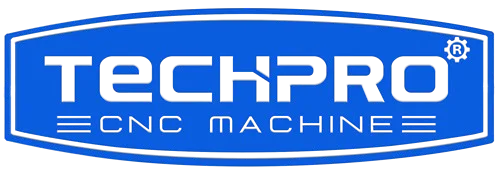TechCNC Electric Spindle Troubleshooting Guide
Established in 2007, TechCNC is committed to delivering precision engineering solutions for CNC machinery. Use this guide to diagnose and resolve common spindle issues efficiently.
Common Electric Spindle Issues
- No Power/Start Failure
- Symptoms: Spindle fails to activate; no indicator lights or system response.
- Excessive Vibration or Noise
- Symptoms: Unusual shaking, rattling, or grinding sounds during operation.
- Overheating
- Symptoms: Spindle surface temperature rises abnormally, triggering thermal warnings.
- Reduced Cutting Efficiency
- Symptoms: Tools wear prematurely, cuts are uneven, or feed rates drop unexpectedly.
- System Error Codes
- Symptoms: Control panel displays alerts (e.g., “ERR-500,” “Overload,” or “Encoder Fault”).
Step-by-Step Troubleshooting
1. Verify Electrical Inputs
- Power Supply Test: Confirm voltage matches spindle requirements (typically 220V/380V ±10%). Use a multimeter to check for fluctuations.
- Circuit Protection: Replace tripped breakers or blown fuses in the main/distribution panel.
- Connection Integrity: Inspect cables, plugs, and terminals for corrosion, fraying, or loose contacts.
2. Review Control Parameters
- Software Settings: Ensure programmed spindle speeds, acceleration/deceleration rates, and torque limits align with tooling specifications.
- Program Validation: Check CNC code for errors (e.g., incorrect RPM commands).
- Reboot Systems: Restart the CNC controller to clear transient software glitches.
3. Mechanical Inspection
- Visual Check: Look for cracks, debris, or coolant leaks around the spindle housing. Verify tool holders are secure and undamaged.
- Runout Measurement: Use a dial indicator to assess spindle concentricity (tolerance: ≤0.005 mm). Excessive runout indicates bearing wear or misalignment.
4. Diagnose Vibration Sources
- Tool Assessment: Replace chipped or worn tools; ensure balanced toolholders and proper collet installation.
- Bearing Health: Listen for grinding noises. Lubricate bearings with TechCNC-approved grease or replace if rough rotation is detected.
5. Thermal Management
- Coolant System Check: Confirm coolant pumps are operational, lines are unclogged, and fluid levels are adequate.
- Ambient Conditions: Ensure workspace temperature stays within 10–40°C. Clean spindle cooling fins or heat exchangers if dusty.
6. Decode Error Alerts
- Manual Reference: Cross-reference error codes with TechCNC’s Spindle Error Code Handbook (included with purchase).
- Reset Procedure: After repairs, clear faults via the controller’s reset function and test spindle in low-speed mode.
Quick Solutions Overview
- No Power:
- Causes: Tripped breaker, faulty wiring, or damaged power module.
- Fix: Restore power supply, replace defective components.
- Vibration/Noise:
- Causes: Unbalanced tools, bearing wear, or loose mounts.
- Fix: Rebalance tools, tighten mounting bolts, replace bearings.
- Overheating:
- Causes: Blocked coolant flow, failed fan, or excessive load.
- Fix: Flush coolant lines, reduce feed rates, or replace cooling components.
- Poor Cutting:
- Causes: Dull tools, incorrect RPM, or encoder misalignment.
- Fix: Sharpen/replace tools, recalibrate spindle speed, check encoder connections.
- Error Codes:
- Causes: Sensor faults, voltage spikes, or software conflicts.
- Fix: Reset system, update firmware, or replace faulty sensors.
Preventive Maintenance Tips
- Lubricate bearings every 500 operating hours using TechCNC-recommended grease.
- Clean spindle air vents monthly to prevent dust buildup.
- Perform a full calibration annually, including encoder and temperature sensors.
Need Further Assistance?
TechCNC’s expert support team is available 24/7. Contact us at [email protected] or +86-17686683792 for advanced diagnostics or part replacements.
Trusted in CNC innovation since 2007.


